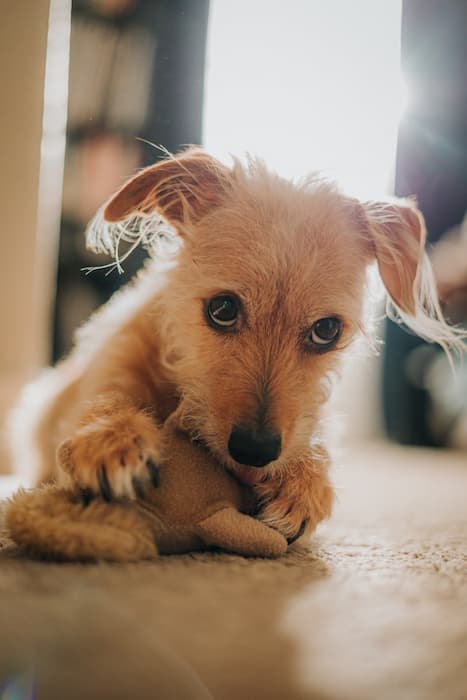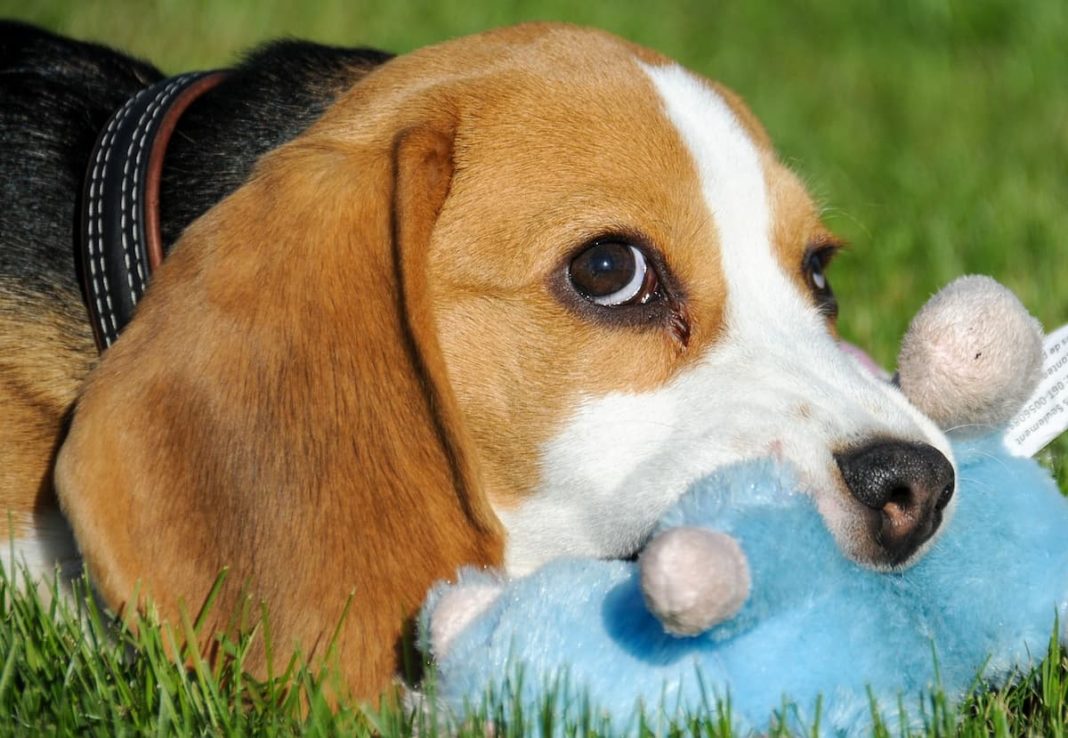What To Do When Your Dog Ate A Stuffed Animal Ear?
If you’ve just noticed that your dog ate a stuffed animal ear, then you’re probably wondering if it’s dangerous and what you should do about it. Should you call a vet? Will your dog be able to pass the toy stuffing material at home? Here’s what you need to know.
So, what should you do if your dog has eaten a stuffed animal’s ear? First, make sure that your dog is not choking, and remove any pieces of stuffing that you can safely and easily remove from your dog’s mouth. From now on, you’ll need to monitor your dog closely over the next 24-48 hours. You’ll need to call a vet if you notice anything unusual about your dog’s behavior or eating habits during this period.
Although your dog has eaten an animal stuffed ear, it’s essential that you don’t panic. Although don’t be naïve either.
The first thing is to make sure that your dog has actually eaten the stuffing. Maybe the dog has ripped a toy apart and left the stuffing to one side. Even if you’ve found some in their mouths, they may not have actually swallowed any.
However, if you know for sure that they have, then do all you can to stop any more from being consumed.
After cleaning up the mess, take the time to look at the toy/stuffing to get an idea of the texture and stuffing type, as well as get a rough idea as to how much the dog may have eaten. Knowing this can be important information to relay to your vet later.
Nevertheless, let’s continue to explore how dangerous this situation is before turning to the recommended response.

Is Stuffing Poisonous To Dogs?
The good news is that many types of toy fluff are non-toxic to dogs, although some types of fluff may pose a poisoning risk depending on what it is made from or how it is made. The good news is that the fluff used to make most dog toys are designed to be non-toxic to dogs and have a minimal (if any) poison risk for dogs.
It’s the fluff found in common household furniture like couches and upholstered stools that may not be designed with completely non-toxic materials.
In some cases, stuffing can be made from a harmless material but be exposed to toxic chemicals in the manufacturing process. This can be the case for some polyester-based fluff objects.
The risk of poisoning for dogs that have eaten a small amount of fluff is extremely low.
Even if a dog has eaten a noticeable amount of fluff, the poison risk – while possible- shouldn’t be the primary concern for owners.
Rather, it’s the digestion and safe passing of the animal stuffing that should be the owner’s focus.
What Will Happen To A Dog That Eats Toy Stuffing?
Lots of dogs eat small amounts of toy stuffing from time to time and are completely fine. They simply pass the stuffing material through their system and out onto their stool. Although for other dogs, eating toy stuffing can cause an upset stomach, choking, or a digestive block.
It’s important to monitor for these signs as they can be life-threatening for a dog.
Will Toy Stuffing Material Pass Through A Dog?
Most of the time, any small amount of stuffing will pass through the dog that eats it. Material stuffing that won’t break down as it moves through a dog’s stomach and intestines will be passed onto the dog’s stool within a few days of being eaten.
However, for a dog that has eaten a large amount of stuffing, or if the dog itself is very small, then there could be a chance that the stuffing will struggle to pass through.
The situation can be made worse as the stuffing material absorbs digestive liquids and expands in the process, making them hard for the dog’s system to pass.
Sometimes, a dog eats a large clump of stuffing that twists and rolls into a size so big it is hard for a dog to move through their digestive system.
Due to stuffing being soft, a dog may have trouble moving it through its system as it can’t build up any pressure that would help move the item along towards the exit.
A dog that isn’t able to pass stuffing will need help from a veterinarian to get its digestive system working properly again and to avoid any further complications.
What To Do Now That Your Dog Ate A Stuffed Animal Ear
Knowing that your dog has eaten some toy stuffing can be concerning, but you don’t need to panic. Make sure to follow the steps below to help make sure your dog stays healthy.
Find Out What Your Dog Ate
Look over the stuffed animal to help determine how much stuffing you think your dog may have eaten and the texture and type of materials used.
If you’ve just walked in on your dog eating stuffing, you need to remove whatever pieces are left from their mouth. Although, if the dog has material in or near its throat (far back in its mouth), you shouldn’t try to remove it, as you may accidentally end up pushing it further down.
If You’re In Doubt, Call A Vet
Although a dog that has eaten some stuffing from an animal toy isn’t usually a major emergency, calling your vet is still a good idea if you have any worries about your dog’s safety.
When calling the vet, they will probably ask for the information you gathered in step one.
The vet will be able to advise you if they think you should come in for a detailed exam or take other active steps to keep your dog safe.
By letting the vet know about what has happened, you’ve also saved yourself some time if you end up needing to take your dog in later due to a further problem.
Monitor Your Dog’s Behavior Over The Next 48 Hours
It’s common for a dog to not show immediate signs once they’ve eaten toy stuffing.
If a dog has swallowed the stuffing without choking, then it’s likely that they will be just fine. However, if the stuffing causes a digestive blockage, you mightn’t know until a few hours later.
You need to monitor for a blockage and monitor your dog’s appetite, bathroom habits, and overall behavior.
A dog that’s experiencing a blockage could lose their appetite, gag or vomit, struggle to use the restroom, and be unable to relax.
Another more serious sign is when they look bloated or show signs of pain when touched and petted.
If your dog seems to be unwell in a day or two after eating material from the animal stuffing, you should get a veterinarian immediately.








